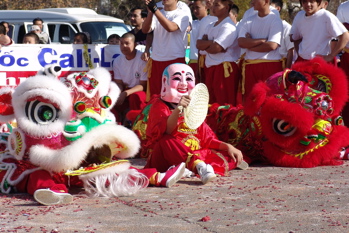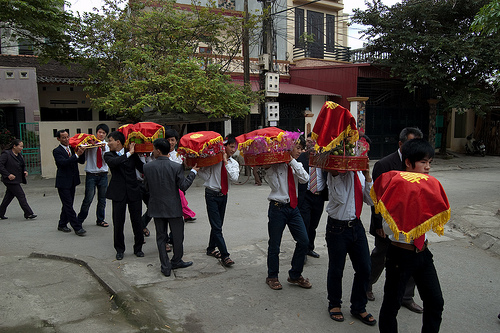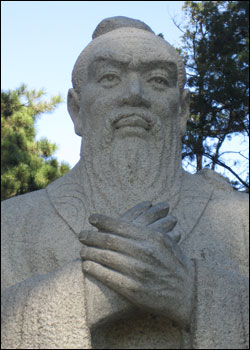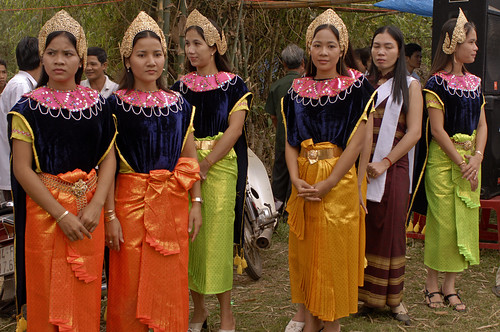Khmer Krom People Statistic. (1999). Retrieved December 1, 2010, from Khmers Kampuchea-Krom Federation Web Site: http://www.khmerkrom.org/node/31
Ha Long - Bay of the Descending Dragon. (2003). Retrieved December 1, 2010, from Vietscape Web Site: http://www.vietscape.com/travel/halong/
Vietnam. (2005). Retrieved December 3, 2010, from Geographia Web Site: http://www.geographia.com/vietnam/
Indigenous People Report. (2007). Retrieved December 1, 2010, from Hunting Ton News Web Site: http://www.huntingtonnews.net/local/070317-kinchen-kk.html
Vietnam Culture. (2008). Retrieved December 1, 2010, from Travel Mekong Delta Web Site: http://www.travelmekongdelta.com/travel-guide/vietnam/vietnam-culture
The Destiny of the Khmer Krom Indigenous People . (2009). Leave Freedom.
Vietnamese Culture. (2009). Retrieved December 1, 2010, from Vietnam Culture Web Site: http://www.vietnam-culture.com/
Vietnamese Water Puppet. (2009). Retrieved December 1, 2010, from Vietnam Culture: http://www.vietnam-culture.com/articles-132-22/Vietnamese-water-puppet.aspx
54 Ethnic Groups of Vietnam. (2010, May 13). Retrieved December 1, 2010, from Indigenous People's Literature Blog Web Site: http://tempxyp2440ym0wn.blogspot.com/2010/05/54-ethnic-groups-of-vietnam-54-dan-toc.html
Education System in Hue, Vietnam. (2010). Retrieved December 1, 2010, from Think Quest Web Site: http://library.thinkquest.org/07aug/01866/singapore/education_system.html
Land of traditions. (2010). Retrieved December 1, 2010, from Anz Travel Web Site: http://www.vietnameasytravel.com/Land_of_Traditions.asp
Learn About the Vietnam War. (2010). Retrieved December 1, 2010, from Digital Hostory Web Site: http://www.digitalhistory.uh.edu/modules/vietnam/index.cfm
Thien Mu Pagoda, Hue. (2010). Retrieved December 1, 2010, from Sacred Destionations Web Site: http://www.sacred-destinations.com/vietnam/hue-thien-mu-pagoda.htm
Vietnam - Language, Culture, Customs and Etiquette. (2010). Retrieved December 2, 2010, from Kwintessential Web Site: http://www.kwintessential.co.uk/resources/global-etiquette/vietnam.html
Vietnamese Culture. (2010). Retrieved December 2, 2010, from Embassy of Vietnam in USA Web Site: http://www.vietnamembassy-usa.org/learn_about_vietnam/culture/
Vietnamese Culture. (2010). Retrieved December 2, 2010, from Discovery Vietnam Web Site: http://www.discoveryvietnam.com/vietnamtraditions1.htm
Nguyen, U. (2010, April 29). What’s the Big Deal with Vietnamese Traditions? Retrieved November 27, 2010, from Vietnam Talking Points Web Site: http://talk.onevietnam.org/whats-the-big-deal-with-vietnamese-traditions/





























![[procession1.jpg]](https://blogger.googleusercontent.com/img/b/R29vZ2xl/AVvXsEi6fDnMutDfEi03GtXgVeow_DVpCMZUivAieMe-TFIv71cvKG2Y0nzSvtIbUfNBPuAE7lfLB1n8ywuS0rrSY0WBI2VsGWDoaNViVroESfeS034Cp3zyc7RdAzQfgrTk1jlIASkp6foipgo/s320/procession1.jpg)

![[procession2.jpg]](https://blogger.googleusercontent.com/img/b/R29vZ2xl/AVvXsEgLno8KkCUXKep03mD-mqP8qdRgnQ3c8bapPuP0qag-NK4Wt2xcEEeZHDAm_ACsfM1AqqKk13P4S1laSwCCU80Id0QJyxY20Ol2A7sS27IJpt8NECUFj67Ljt_SOHRHt3KfWXNOKsg9Rlw/s320/procession2.jpg)